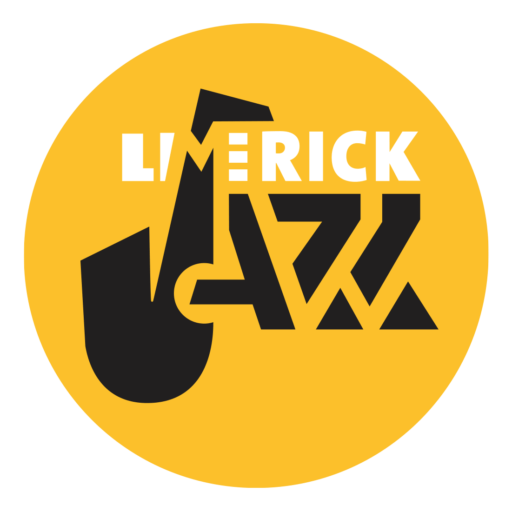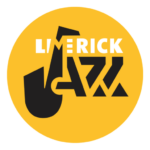Jazz education has been going for over 50 years and it works. I’ve uploaded some very useful videos that show the well-known jazz teacher JB Dyas of the Thelonious Monk Institute giving a seminar on Teaching Jazz Fundamentals To High School And College Musicians. There are 10 videos which take around 90 minutes to view in their entirety and some include a supervised performance by a group of students:
If you go to our YouTube channel you will find more jazz education clips featuring artists such as Bill Evans, Kurt Elling and many others.
It can be a bit confusing working out what software can best support jazz education, so here are some personal views based on personal experience or a trusted recommendation. Wherever possible I have tried to identify a good free or extremely low-cost app as an alternative to more expensive options. It’s worth bearing in mind that a lot of the free apps described below have options for in-app purchases so you can end up spending money, but the basic functionality does the job.
You will need recording software otherwise known as a Digital Audio Workstation (DAW) and this costs nothing. If you have any Apple product you can download Garage Band for free. If you have a PC you can download Audacity. If you want to use an Android device there is a free version of Roland Zenbeats which does the basics (I admit I’m not an Android user so I’d be grateful for any views you might like to share on preferred apps).There are obviously much sexier products for all machines but these are not really necessary for practicing. Using either of these programs you can record yourself playing along with either a backing track from the likes of a Jamey Aebersold CD, or you can use an original version if you feel like it. There’s nothing like hearing yourself as you really sound although it can be a bit of a shock at first!
Having access to play-along backing tracks can really help build up your skills and confidence. For many years the market leader was Jamey Aebersold who provides CDs with recordings of jazz standards by top musicians, which are great but expensive if you get addicted (there are over 130!). An alternative is midi-based play-along software, and the market leader here is iReal Pro, which costs $12.99 or $19.99 depending on platform and is available for all Apple formats and Android (no Windows version). This works very well and its only major shortcoming is that it does not include sheet music. This can be addressed by buying or borrowing a fake book (see below). If I had to recommend one particular app for a beginner student to spend money on, this is it.
Another type of app that can be useful as part of a practice routine is a metronome, particularly one that allow certain beats in the bar to be silenced so as to facilitate rhythm exercises. Tempo is a good place to start for all platforms.
Ear training can be intimidating if one assumes it’s driven by natural gifts rather than practice. In reality ten minutes work a day for a few months will bring results although it is difficult to rush the process, so you probably are best served with a smartphone app that is convenient to use. Earmaster works well for iPhone and Perfect Ear and Complete Ear Trainer are options for Android. These apps are a good way to get started on basic music theory as well.
Next up is transcribing. Transcribing is the academic term for copying material from records, and it’s relevant whether you want to be John Coltrane or Keith Richards. Transcribe+ and Anytune are both popular on IOS (the latter is coming soon to Android). These apps will make transcribing solos as painless as is realistically possible, and transcribing is a vital tool in ear training and the development of jazz vocabulary.
Transcribing leads on to music notation software as it’s a lot less messy than pencil, paper and copious amounts of eraser shavings! Also, if you enter the solo you are working on into the program instead of writing it down on paper the program will play it back, which can really help resolve any worries about whether you have got the notes right. Notation software is obviously useful for writing down original compositions as well as other musician’s solos. There are paid applications such as Finale and Sibelius but these are expensive. Thankfully there is a very good free product called MuseScore which has jazz-specific features such as “handwritten” fonts and transposing chord symbols. Although most of the apps I describe above can work just fine on a smartphone or tablet, notation software really needs a laptop or desktop. MuseScore works for both PC and Mac.
This could obviously be a very long section so I’ll limit its scope to books of a general nature plus one piano book, seeing as how we’re all meant to play a bit of piano. I can vouch for all of these from experience and they are all recommended by some of the educators I’ve studied with. I mentioned fake books above – these are numerous and expensive and you may be better off asking your teacher for copies of sheet music. The most useful are the Real Book series (Hal Leonard) and the New Real Book series (Sher Music).
Improvisation
How To Improvise and Ready, Aim, Improvise by Hal Crook (Advance Music)
Theory
The Jazz Theory Book by Mark Levine (Sher Music)
Mental Approach (this matters!)
Effortless Mastery by Kenny Werner (Jamey Aebersold)
Free Play by Stephen Nachmanovitch (Jeremy P. Tarcher)
Piano
Jazz Piano From Scratch by Charles Beale (ABRSM)
(This author wanted to fill a gap in the market for beginner jazz pianists and did it. It’s also the course book for the ABRSM jazz piano exams)
All About Jazz has a huge archive of reviews, interviews etc..
The Hancock Institute of Jazz provides access to Jazz In America, an online resource for secondary school education run by JB Dyas (see What is Jazz Education).
ABRSM provides Grade 1 to 5 examinations in jazz piano and most wind and brass instruments. They also provide ensemble examinations at beginner, intermediate and advanced levels.
London College of Music provides Grade 1 to 8 examinations in jazz piano and most wind and brass instruments. They also provide Grade 1 to 8 examinations in electric guitar, bass and drums – these are not specifically jazz exams but cover a lot of relevant subjects such as harmony and improvisation.
We are happy to put interested students in contact with teachers who can prepare them for these examinations.
There is full jazz performance degree course at Dublin City University, and a number of Limerick Jazz Workshop participants have gone on to study there. The DCU course has a very strong connection with the world-famous Berklee school in Boston, including the Berklee Tracks course which allows students to do the first two years of the full four year Berklee undergraduate degree on a remote basis.
Unfortunately I have not been able to find a good guide to jazz degree courses in Europe and beyond. Most of the major European conservatoires provide a full jazz degree option, and the amount of choice in North America is positively dizzying! Given the history of jazz and the ubiquity of English language skills you should probably not be too intimidated about applying to a course in a country where you lack local language skills, and in some of these countries there can be financial assistance for students. If this is something you would like to pursue please contact us and we will do what we can to help.
This article was updated by Ed Hansom in July 2020. It contains his personal views and is not official Limerick Jazz Society policy.

